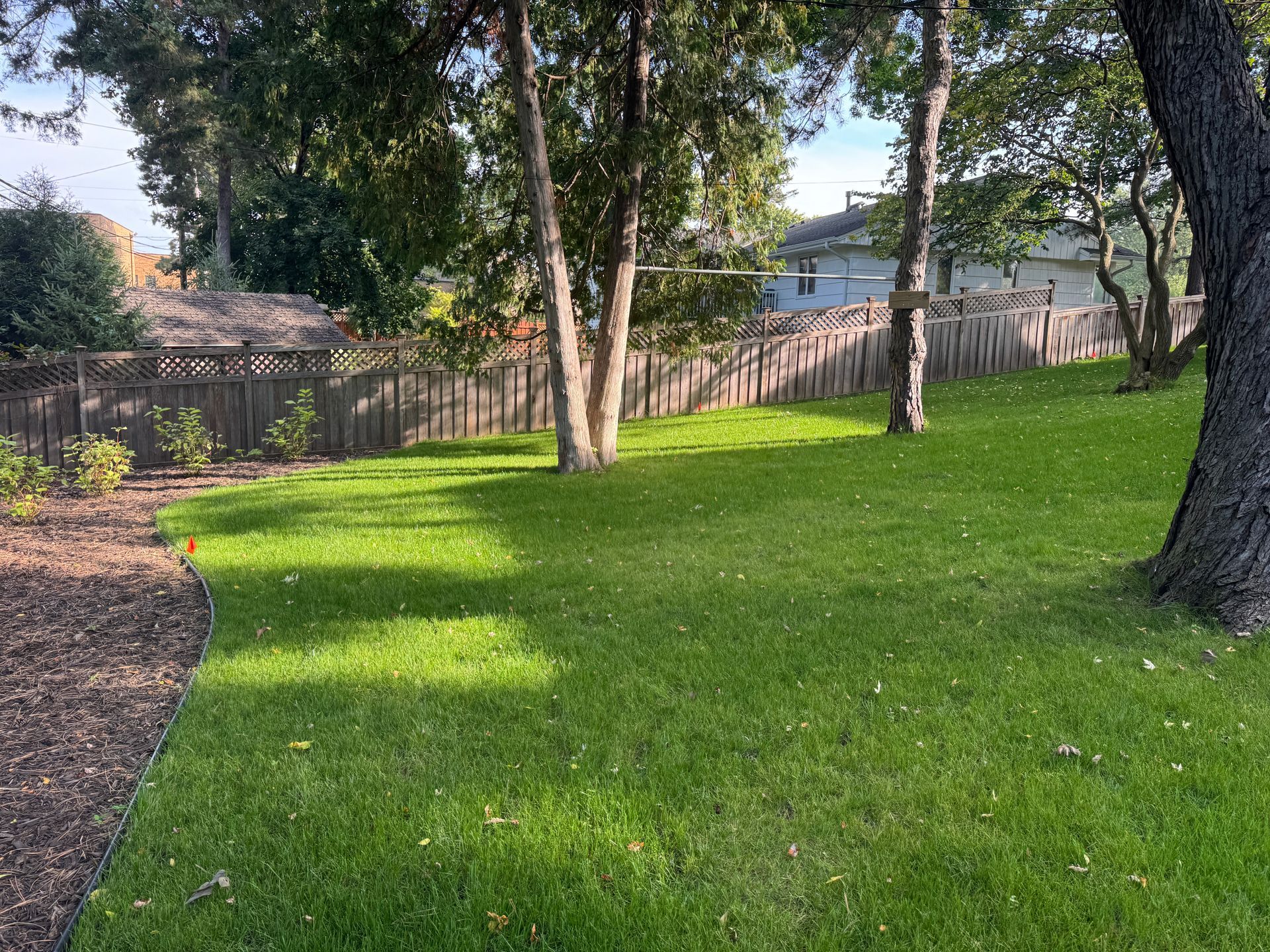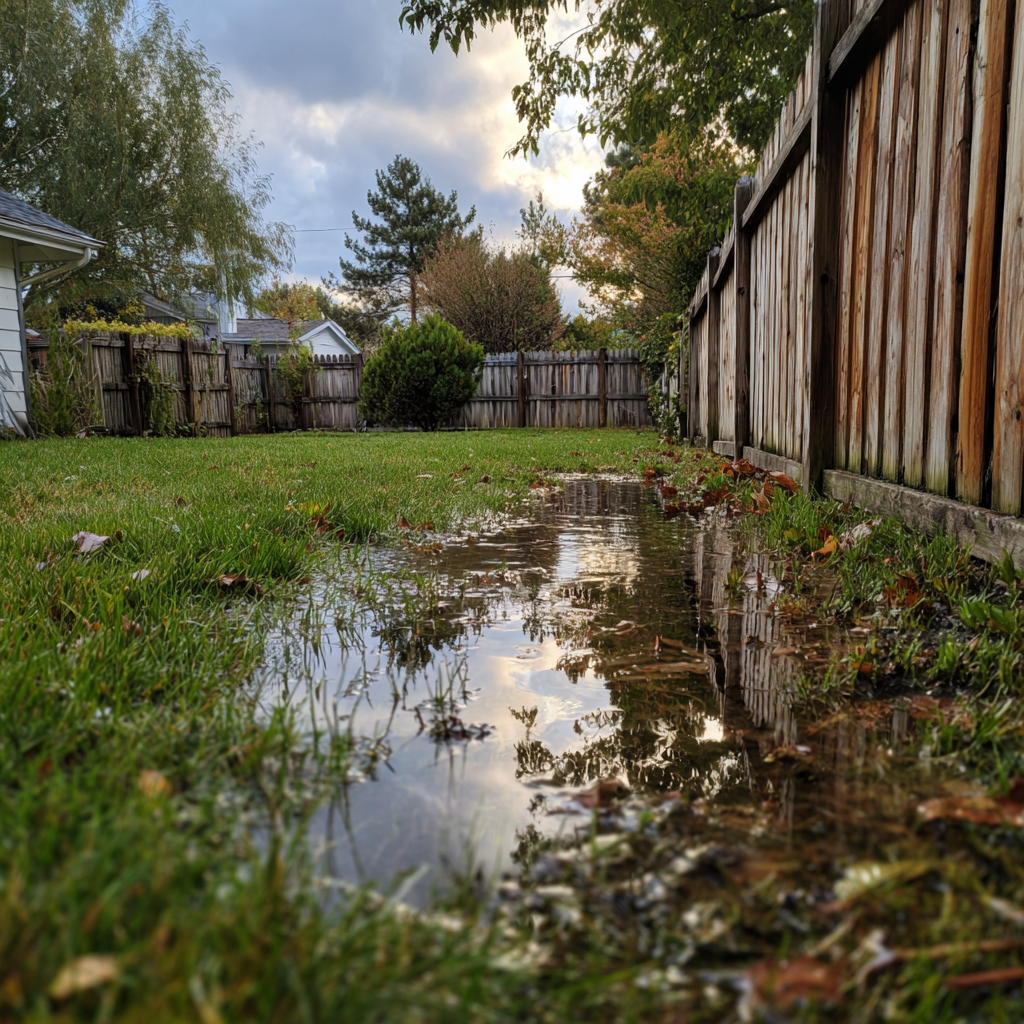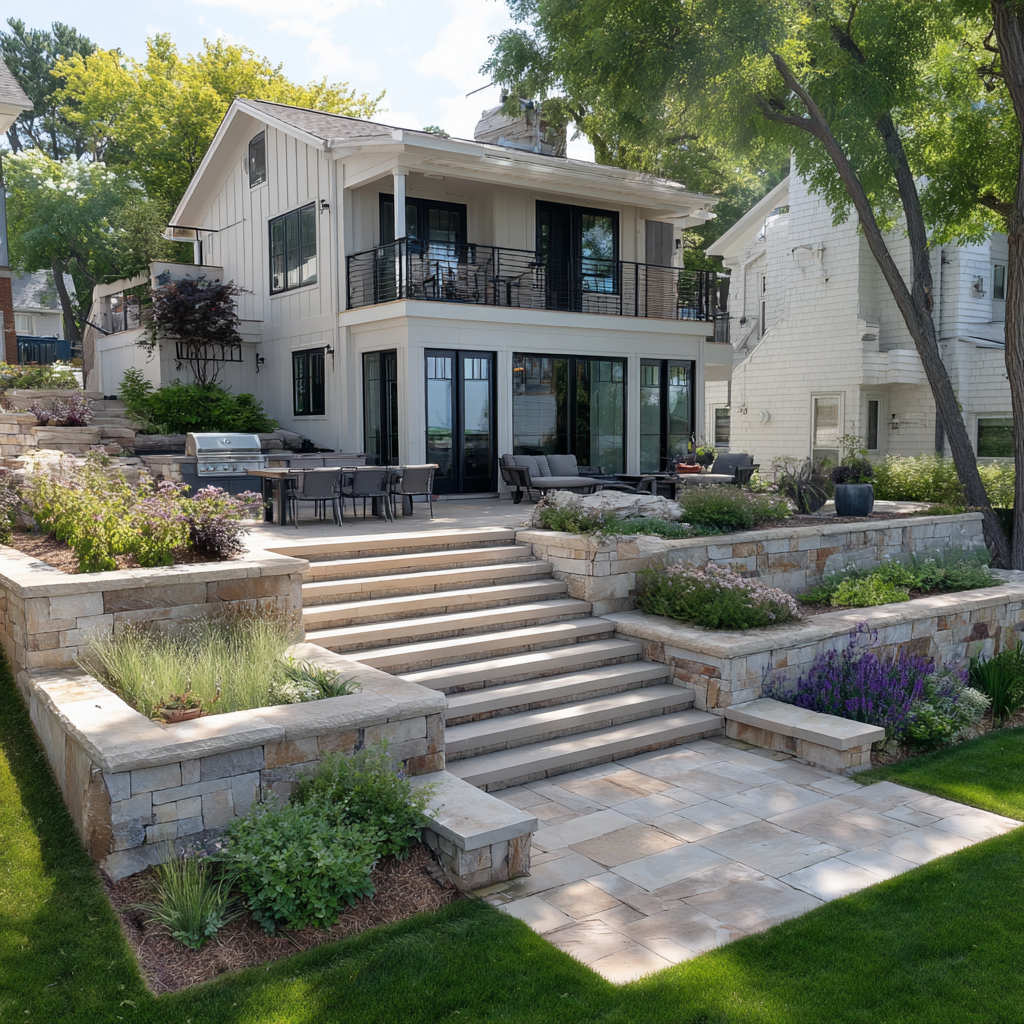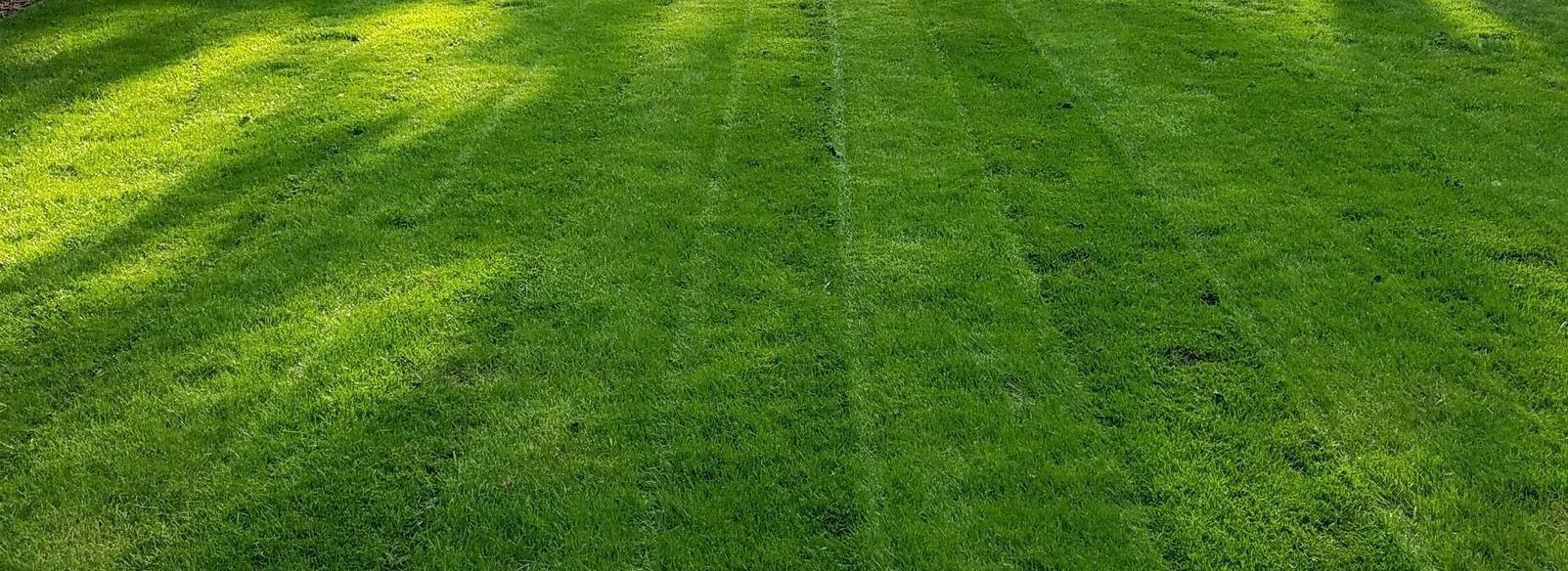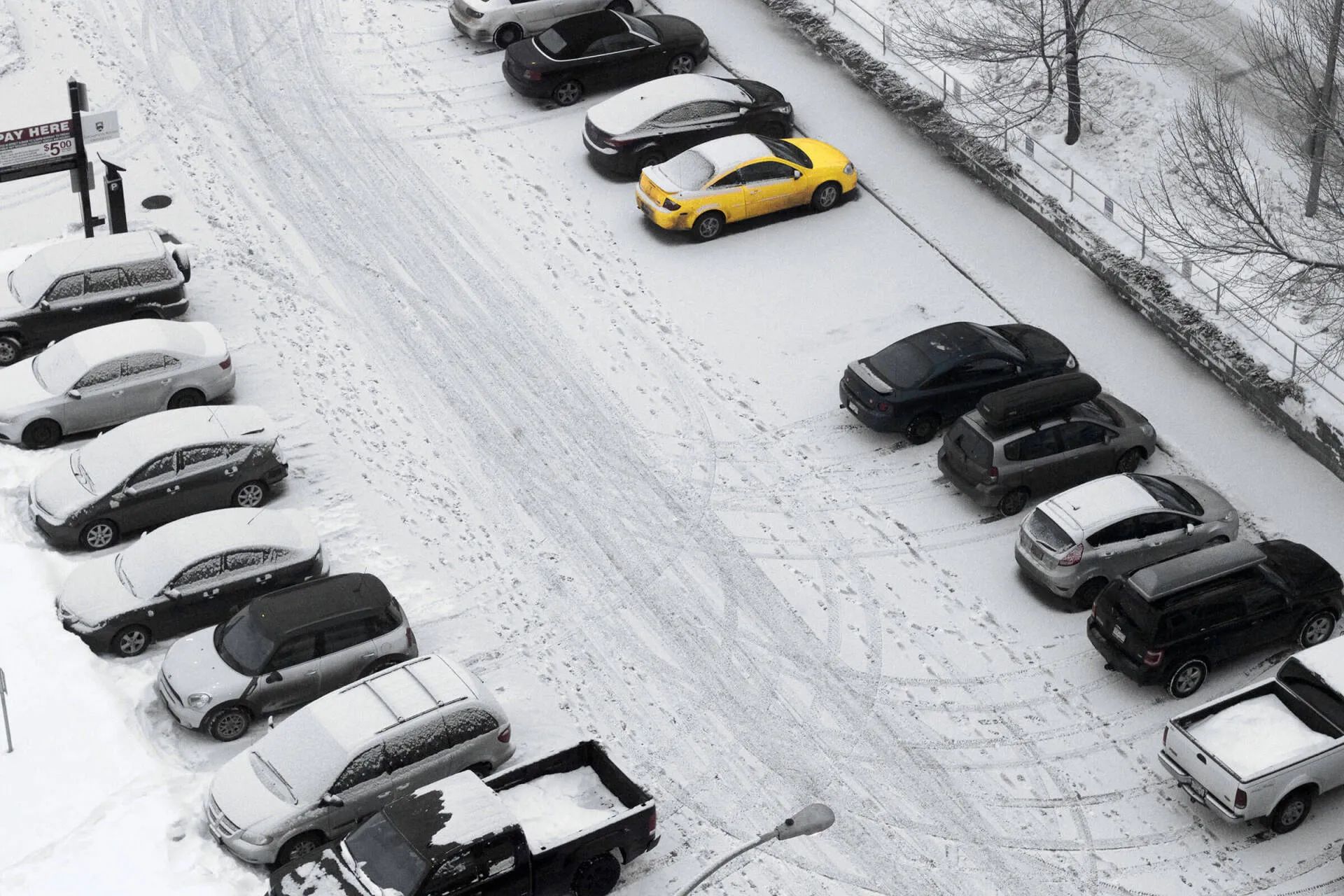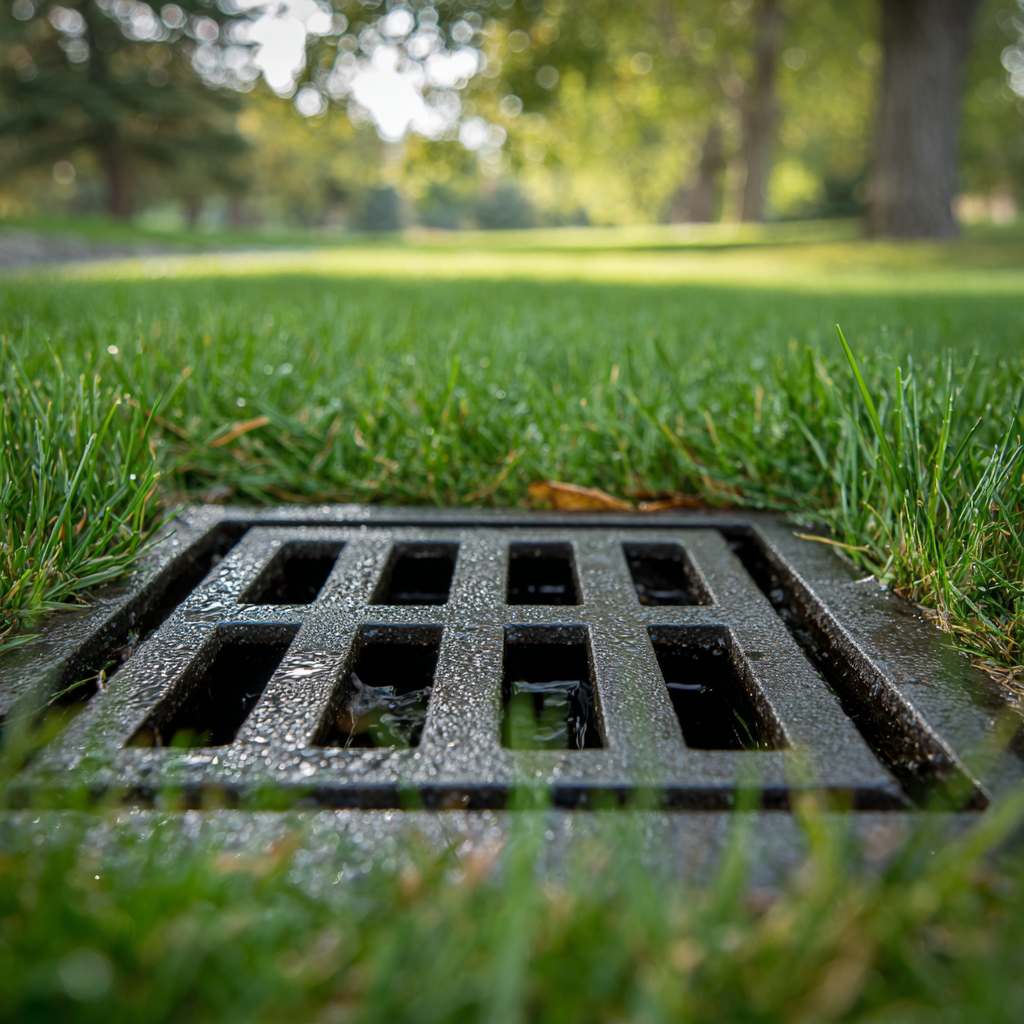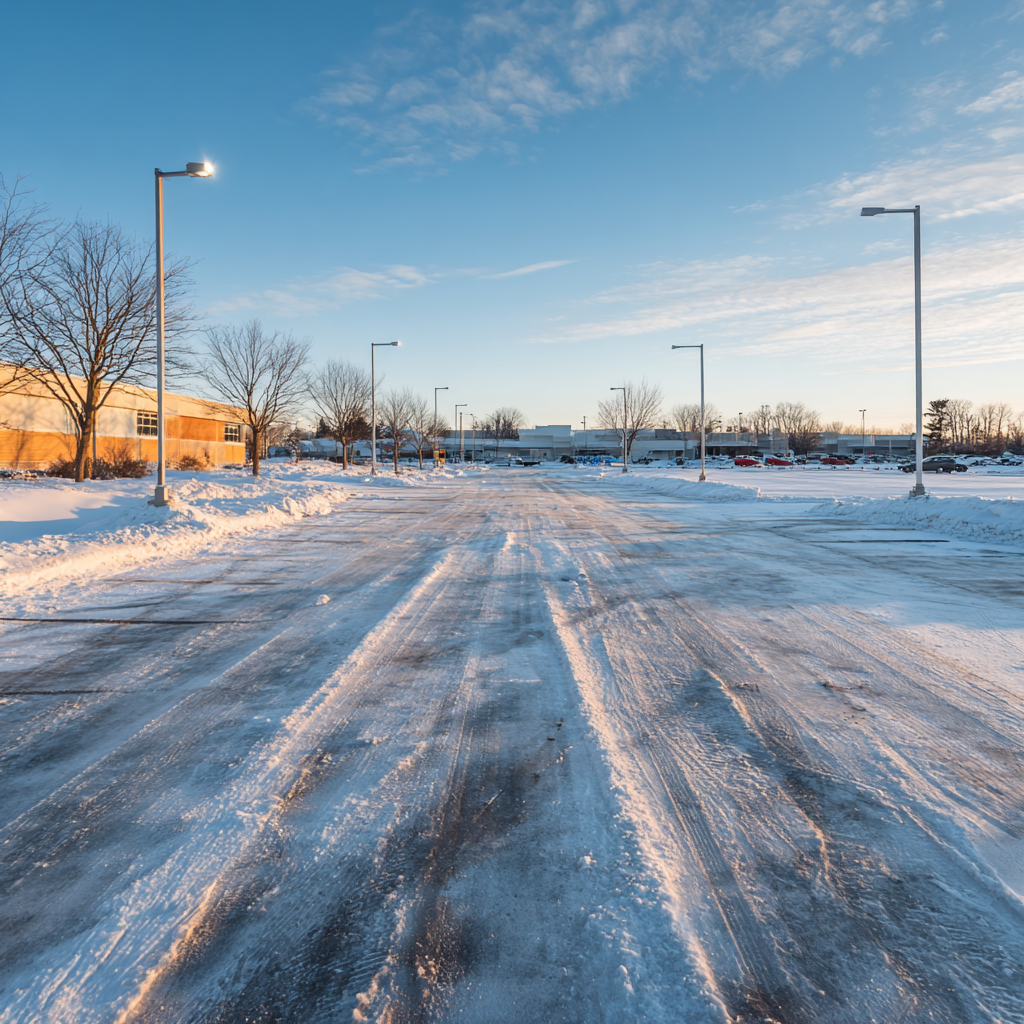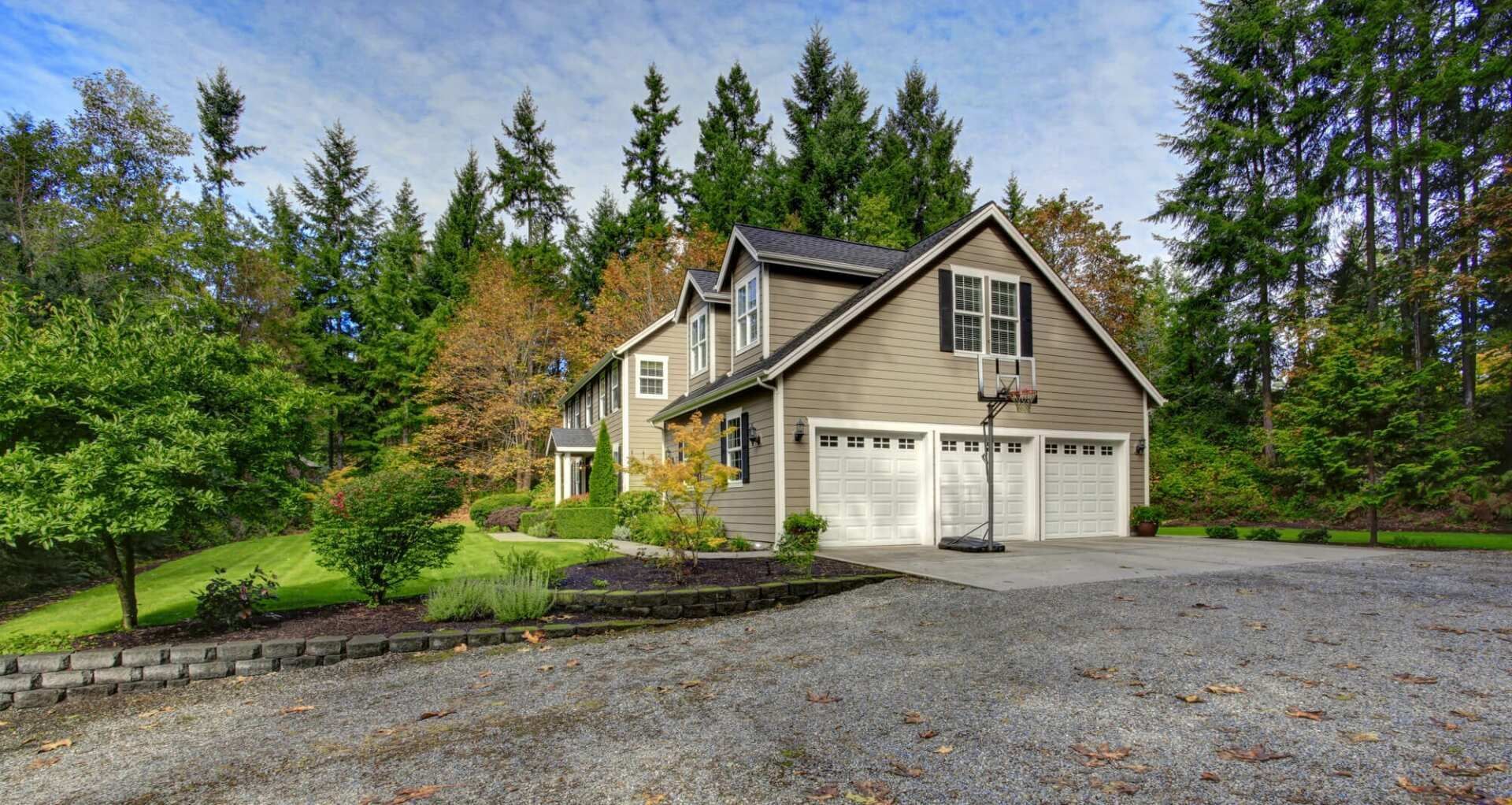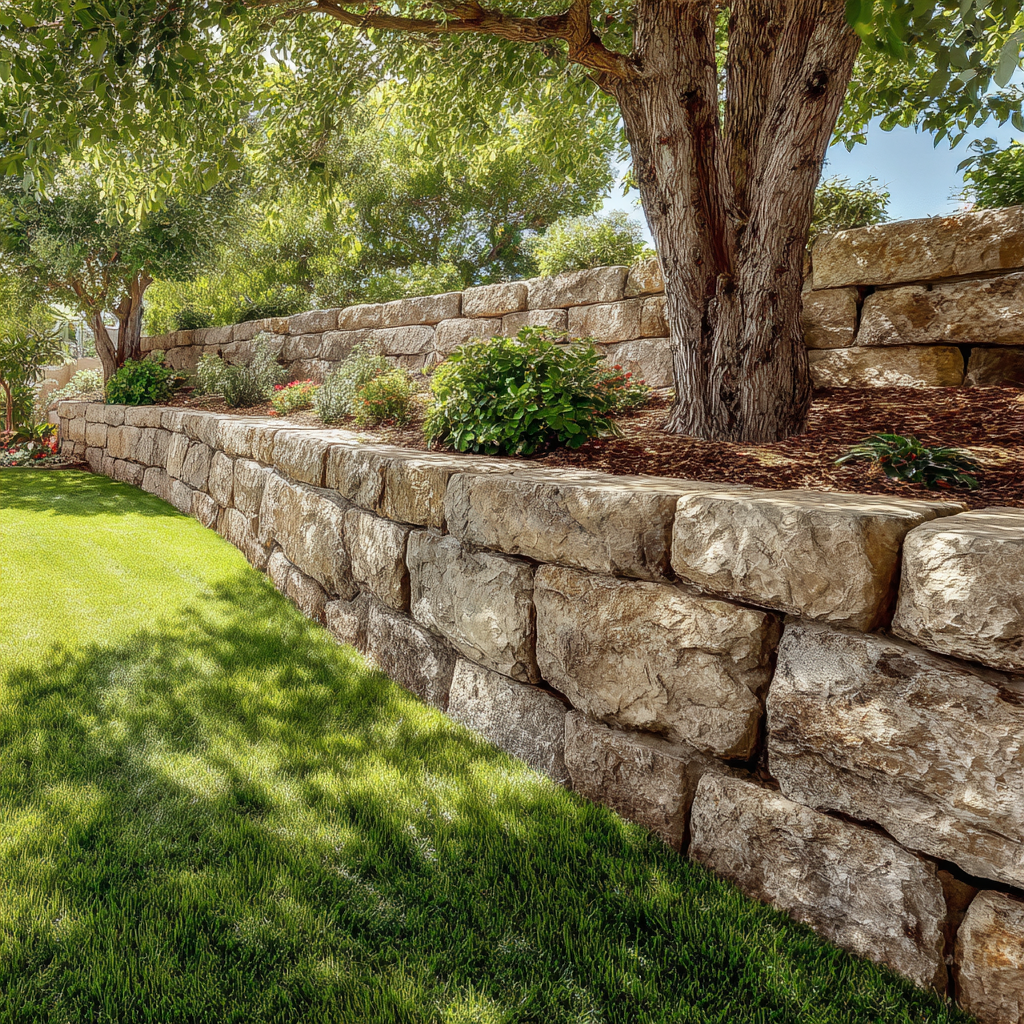How Proper Drainage Protects Patios and Pools in Edina
Slopes Don’t Break Patios. Water Does.
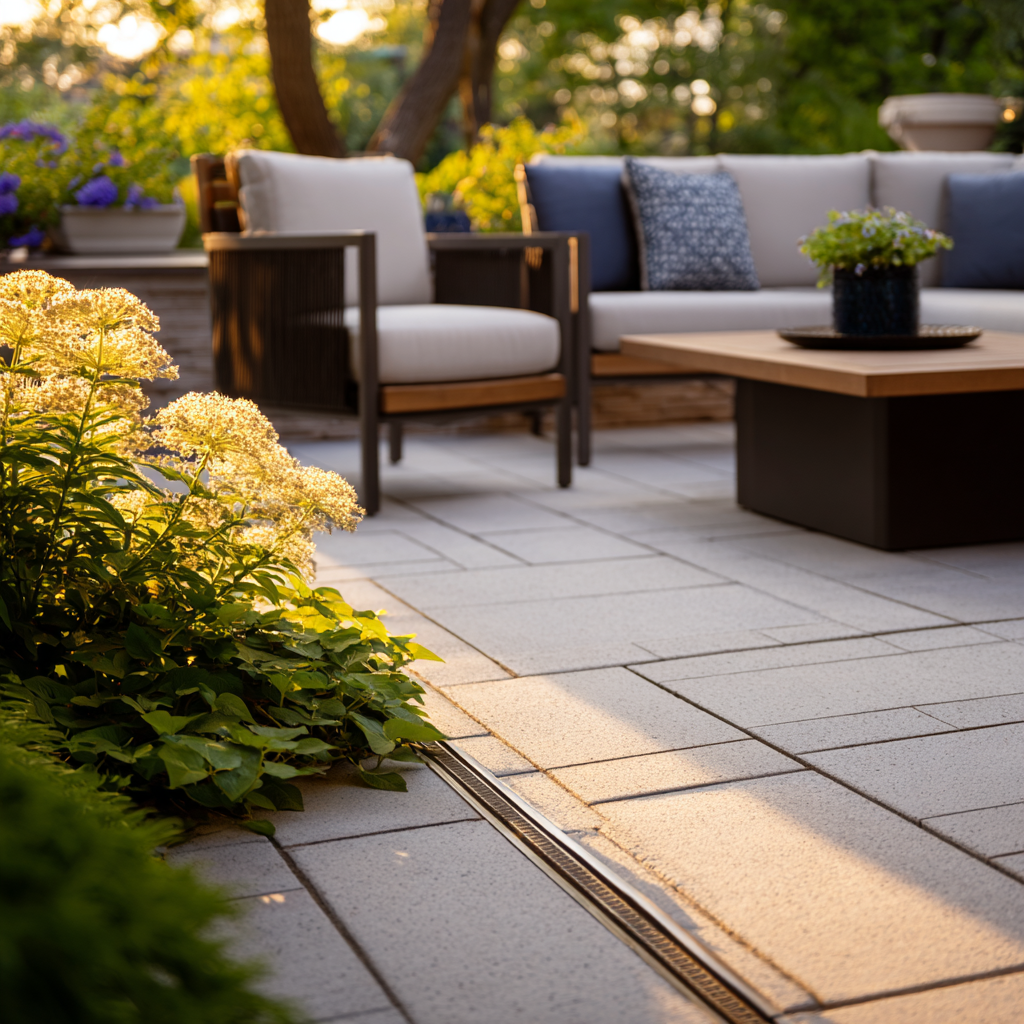
When most homeowners think about why patios and pools fail, they look at the surface. They notice pavers cracking, concrete slabs lifting, or coping stones around a pool pulling away. It is natural to assume the material itself gave out. But the truth is almost always hidden beneath. The real culprit is water and how it interacts with the soil beneath those features. In Edina, where mature trees, clay heavy soils, and dramatic freeze and thaw cycles combine, drainage is the difference between a project that lasts two years and one that lasts twenty.
Here is what actually happens. When water collects under a patio or pool deck, the soil becomes saturated. Clay heavy soil, which is common in Edina’s older neighborhoods, holds water like a sponge. That saturated soil then expands when it freezes. In spring, it thaws and contracts, leaving voids and instability. This constant cycle of expansion and contraction exerts enormous pressure on anything above it. Patios crack, pavers heave, fences shift, and in some cases, slabs even press into houses. I have seen sliding doors break simply because a waterlogged patio base pushed upward into the frame.
The irony is that many homeowners never see this coming. They invest tens of thousands of dollars into beautiful patios or pools, often with premium materials, only to find the project compromised within a few seasons. That is not just disappointing, it is devastating financially. And the worst part? All of it is preventable. With proper drainage systems installed during construction, these problems do not happen.
By the end of this article, you will understand why drainage is non negotiable for patios and pools in Edina, what mistakes cause the most damage, how professional solutions solve them, and why the additional investment pays for itself many times over. You will also see why so many homeowners hire KG Landscape not just as designers, but as engineers of long term solutions.
Why Drainage Is Non Negotiable in Edina Hardscapes
Edina’s landscape is full of charm. Mature neighborhoods with established trees, historic homes with deep basements, and high value properties with carefully designed yards. But those same qualities make water management especially important. The soils vary from clay pockets that trap moisture to loamy mixes that wash out when saturated. Add in Minnesota’s harsh winters, where temperatures swing from freezing to thawing repeatedly, and you have a recipe for structural problems in outdoor living spaces.
Here is the chain reaction. Without drainage, rainwater and snowmelt soak into the soil beneath a patio or pool deck. Because clay does not let water pass through easily, it holds onto that moisture. In winter, that water freezes, expands, and pushes upward. This is called frost heave, and it can move even the heaviest concrete slabs. When spring arrives, the thaw leaves mushy, unstable ground. The patio shifts, creating trip hazards, or the pool deck settles unevenly, pulling away from the pool structure itself.
The damage does not stop there. Waterlogged soil can send runoff toward the house, especially in Edina where many lots slope toward basements. This causes foundation cracks, moisture infiltration, and mold problems indoors. I have seen homeowners spend more on basement repairs than they did on their original patio, all because drainage was ignored.
Even surrounding features like fences and decks suffer. Fence posts pop out of the ground, deck footings shift, and landscaping struggles to take hold in soggy conditions. In every case, the visible problem traces back to the invisible issue: unmanaged water.
The lesson is clear. You cannot separate design from drainage. They are two halves of the same whole. A patio or pool without drainage is like a house without a foundation. It may look fine at first, but the failure is inevitable.
Pro Tip: Drainage is not an add on. It is the foundation that makes patios and pools last. A fifty thousand dollar pool without drainage is a liability. With drainage, it is an asset that adds value for decades.
Common Mistakes That Destroy Patios and Pools
Drainage problems in Edina do not usually come from homeowners. They come from contractors who overlook it. Too many builders focus only on the visible end product: the stone pattern, the pool edge, the finishes. They do not consider what is happening beneath. And when they cut corners underground, it shows up within a few seasons above ground.
One common mistake is failing to account for water falling through decks. In Plymouth, for example, I have seen patios installed directly beneath elevated decks. Rain falls through the boards, saturating the patio base below. Within a couple of years, pavers settle and create uneven surfaces. In Minneapolis, runoff from alleys often channels into backyards. Contractors who do not address this flow end up creating patios that turn into ponds. Along Lake Minnetonka, properties on hillsides often slope toward patios or pools. Without walls and drainage systems, water rushes downhill and undermines everything in its path.
The technical mistakes fall into a few categories:
- Skipping base preparation or using soil that is not compacted properly
- Failing to install drain tile or French drains under patios and decks
- Neglecting to slope patios away from homes, directing water toward siding
- Overlooking connections between sump pump discharge and hardscapes
- Ignoring runoff paths from neighboring lots or roofs
The consequences are dramatic. I have seen patios tilt back toward houses, forcing water against basements. I have seen pool decks crack and lift within two winters. I have seen slabs shift so badly that sliding doors no longer opened. These are not minor aesthetic issues. They are failures that compromise safety, property value, and even the home itself.
Pro Tip: If a contractor is not talking about drainage in detail, they are not thinking long term. Ask them exactly how water will be managed under and around your patio or pool. If they do not have a clear answer, that is your red flag.
Professional Solutions: How We Engineer Drainage That Works
At KG Landscape, drainage is not a separate service. It is part of every patio and pool project. We have rebuilt too many failed patios to treat drainage as optional. When designed correctly, drainage is not just an accessory. It is the framework that allows everything else to succeed.
The process starts with grading. Every patio and pool deck needs a slope that moves water away from the house. Even a fraction of an inch in the wrong direction can make the difference between a dry basement and one that floods. We shape the land so water naturally flows where it should, into safe discharge areas, not back toward foundations.
Next comes subsurface drainage. Drain tile systems, which are perforated pipes buried beneath the patio or pool base, capture water before it can saturate the soil. These pipes carry water away, often tying into French drains or storm systems. Gravel backfill around pipes ensures quick infiltration and reduces hydrostatic pressure.
Sump discharge is another critical factor. Too many properties in Edina send sump pump water right back into the yard, often near patios. We reroute these lines underground to ensure they do not undermine outdoor living spaces. Edge protection is equally important. Waterproofing where patios meet siding prevents water from sneaking into basements.
The timing of drainage is everything. Installing it during construction is efficient and cost effective. Retrofitting later means tearing up finished patios or decks, which triples the cost and frustration. By integrating drainage from the beginning, you pay once and enjoy the results for decades.
Pro Tip: Installing drainage during construction costs a fraction of retrofitting later. What adds fifteen percent up front can save you from rebuilding costs that are double or triple.
The Costliest Mistake: Skipping Drainage Altogether
The most expensive patios and pools are not the ones built with high end stone or custom coping. They are the ones built without drainage. That is because those projects often have to be rebuilt entirely.
I have seen it all. Concrete slabs heaving into siding and breaking sliding doors. Pool decks shifting so badly that coping stones cracked off. Patios that tilted toward the house, flooding basements every time it rained. The common thread in all of these cases? Drainage was not addressed.
The reason drainage gets skipped is simple: it is invisible. Once the patio or pool is finished, you do not see the pipes, gravel, or slope adjustments. Contractors looking to cut costs know this. They bet that homeowners will not ask questions and that problems will not appear immediately. But in Minnesota, it only takes one harsh winter to reveal mistakes.
Skipping drainage feels cheaper at first. But the costs compound quickly. Rebuilding a failed patio can cost twice as much as doing it right the first time. Fixing water damage to basements or siding can cost even more. By the time homeowners call us to fix these projects, the price tag is often three times what drainage would have cost originally.
Clients hire KG Landscape precisely because we refuse to cut this corner. We have done so many of these projects that it is impossible to think of just one example. Drainage failures are that common. That is why we integrate it into every design. It is not about upselling. It is about protecting investments.
Pro Tip: The most expensive patio or pool you will ever own is the one you have to rebuild because drainage was skipped.
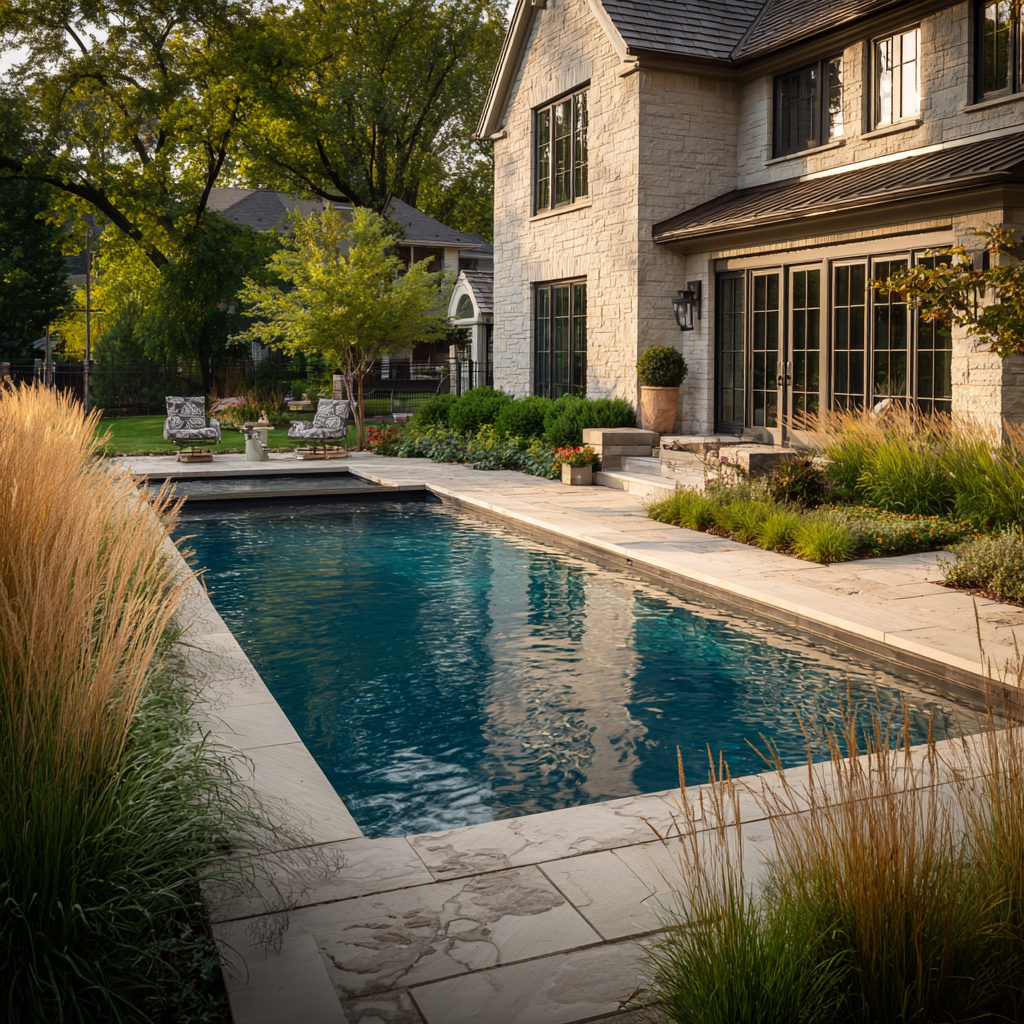
Why Drainage Adds Value and Peace of Mind
Drainage is not just about preventing disasters. It is about adding confidence and long term value. For homeowners in Edina, where properties often cost well into the seven figures, that peace of mind matters as much as aesthetics.
When a patio or pool is built with integrated drainage, you are not just getting a space that looks good today. You are getting a system that performs for decades. You do not spend winters wondering if slabs will shift or springs repairing cracked coping stones. You simply enjoy your investment.
Drainage also adds measurable resale value. Buyers in Edina are sophisticated. They know the difference between a patio that looks nice and one that is engineered to last. When they see professional drainage systems in place, they recognize quality. It becomes part of the home’s story. That gives buyers confidence and can increase the selling price.
Perhaps the biggest benefit is lifestyle. Families can host pool parties without worrying about uneven decks. Kids can play on patios without tripping on lifted slabs. Homeowners can invest in outdoor kitchens, fire features, and lighting with confidence, knowing the base beneath is solid. That peace of mind is priceless.
Pro Tip: Drainage is the insurance policy that keeps your patio or pool enjoyable for decades. Without it, every season brings uncertainty. With it, every season brings enjoyment.
FAQs
How much does it cost to add drainage to a patio or pool project in Edina?
Adding drainage typically increases project costs by ten to twenty percent, depending on the system. A forty thousand dollar patio project might require an additional four to eight thousand for grading, drain tile, and discharge systems. While that sounds like a lot, it is far less than the cost of rebuilding a failed patio or repairing water damage to a pool deck. Many homeowners view this as an insurance policy, an upfront expense that protects their entire investment.
What happens to patios and pools without drainage after five to ten years?
Without drainage, most patios and pool decks show signs of failure within a few years. Pavers shift, concrete cracks, and low spots collect water. Over a decade, entire sections can settle, tilt, or break away from the home or pool. Homeowners sometimes see damage to siding or doors as slabs press against the house. Fence posts and nearby structures also heave out of the ground. These issues do not improve with time. They only get worse.
Can drainage be added after a patio or pool is already installed?
Yes, but it is far more difficult and expensive. Retrofitting drainage often means cutting into or removing sections of the patio to install pipes or re grade soil. It also creates more disruption to landscaping. That is why the best approach is to install drainage during the original construction. If you already have a failing patio or pool, adding drainage is still worthwhile, but expect higher costs and more invasive work.
What specific drainage solutions work best in Minnesota’s freeze and thaw climate?
The most effective systems include gravel backfill, perforated drain tile, and grading that directs water away from the house. French drains are often used in problem areas, while sump pump discharge routing ensures water does not cycle back toward patios. Waterproofing near edges and foundations adds an extra layer of protection. Every system should be tailored to the property’s soil type, slope, and structures.
How does drainage protect nearby structures like decks, fences, or homes?
Water does not stop at the edge of a patio or pool. It spreads. Poor drainage leads to fence posts popping out, deck footings shifting, and water pooling against siding. In Edina’s climate, freeze and thaw cycles magnify these problems. Proper drainage keeps water away from all nearby structures, preserving not just the patio or pool but the entire outdoor living environment.
Can patio and pool drainage be combined into one integrated system?
Absolutely. In fact, that is the best approach. Installing drainage for a patio and pool at the same time means excavation is shared and systems can tie into each other. This ensures water is handled efficiently across the property. It is more cost effective and prevents one area from being fixed while another remains vulnerable.
What maintenance does a drainage system need over time?
Most systems require minimal upkeep. Annual inspections help ensure outlets are not blocked and drain tile is functioning. Homeowners may need to clear debris from catch basins or check that sump pump discharges remain connected. With routine attention, these systems can perform for decades. If small issues arise, such as a clogged outlet, they are easy to address before they become major problems.

